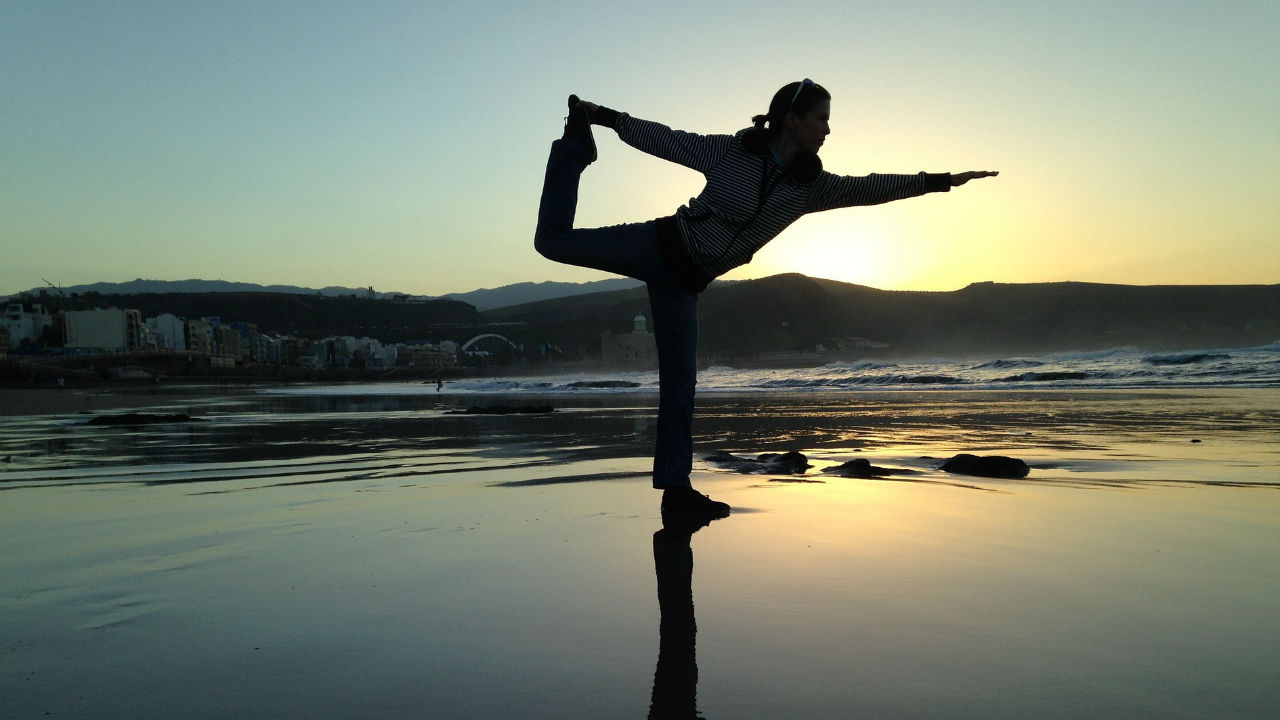 via pixabay
via pixabay
Yoga has become more popular in the U.S. over the past decade. Many people try their first class at the urging of a friend, or because a class at their gym is offered at an opportune time. But others find that going into a yoga studio as a newbie is daunting, and maybe timidity prevents them from trying out something they know they would enjoy. This primer on yoga styles and sample class offerings can help yogis-to-be choose an appropriate introductory class where they will feel comfortable and confident.
Yoga actually comprises more than just physical postures, though most beginners come to class for a physical workout. The physical poses of yoga are known as asanas. According to B.K.S. Iyengar, author of Light on Yoga, asana practice helps the yoga practitioner to become healthy in body, mind and spirit. “A soul without a body,” he wrote, “is like a bird deprived of its power to fly.” Asana, then, can be viewed as a starting point for a yoga practice; therefore, we can look to different types of asana practices to ascertain which type of class might appeal to each individual.
Iyengar himself is the founder of one well-known style of yoga practice. An Iyengar yoga class focuses on alignment and precision. Poses are held for a longer period of time than in some other styles, and practitioners might use props such as blocks and straps to support them in specific postures. Because these classes move more slowly and focus on the “how-to” of each posture, they can be a great starting point for beginning yogis.
Another popular style of yoga in the U.S. is called Vinyasa. There are various types of Vinyasa classes; the term itself refers to a connection between breath and movement—for example, a teacher might cue students to “Breathe in as you float your arms up overhead” then to “Exhale as you pull your hips back and fold forward.” One style of Vinyasa yoga is Ashtanga, founded by the late Sri K. Pattabhi Jois. Ashtanga yoga follows a specific series of postures performed sequentially, increasing in difficulty as the practice grows stronger. “Mysore” yoga classes fit into the Ashtanga style and are student-led with a teacher present to help with each new pose. While these classes might sound intimidating to new students, they actually can be comfortable environments because each student is working at her own pace. It’s okay to practice only two or three postures during a class!
Other Vinyasa classes move in a flowing pattern than can seem almost like a dance, and these classes generally incorporate music. A Level I Vinyasa class can be appropriate for beginners, although it may be helpful to have some knowledge of the postures ahead of time. Familiarity with the poses can help prevent injury from misalignment and can also increase comfort as the class moves from posture to posture.
A newer style of yoga that is growing in popularity is Anusara yoga, founded by John Friend in 1997. Because Anusara yoga focuses on principles of alignment, it can be a good choice for beginners. The word “Anusara” means “flowing with Grace” or “following your heart,” and each class incorporates a theme for students to focus on throughout the practice. Community and light-heartedness are important aspects of Anusara yoga.
All of these styles fall under the category of “Hatha Yoga,” which basically means “physical yoga practice.” (This is in contrast to strictly meditative yoga practice, for example.) Classes termed “Hatha” generally follow traditional yoga practices and might incorporate aspects of different newer styles. A basic Hatha class can be a good springboard for beginning a yoga practice.
Some schools offer “Introduction to Yoga” classes or “Yoga for Beginners” workshops. A new student can always ask which classes are most appropriate for beginners if the schedule doesn’t clarify levels. One beautiful thing about yogis is that they are very gentle and welcoming! While it may be difficult to take that first step into the studio, once you walk out you may wonder why it took so long to get there in the first place.
Sources:
Light on Yoga by B.K.S. Iyengar
Part II: Relaxation and Spirituality focuses on gentle, meditative practices and how beginners can choose a class to gain these benefits.
Reviewed June 16, 2011
Edited by Alison Stanton
Hillary Easom is a yoga teacher in the San Francisco Bay Area. Her practice started with an Iyengar-style class, and she soon developed a love for Vinyasa yoga. She teaches Vinyasa, Prenatal, and Postnatal yoga, along with playful kids’ yoga classes.






Add a CommentComments
There are no comments yet. Be the first one and get the conversation started!